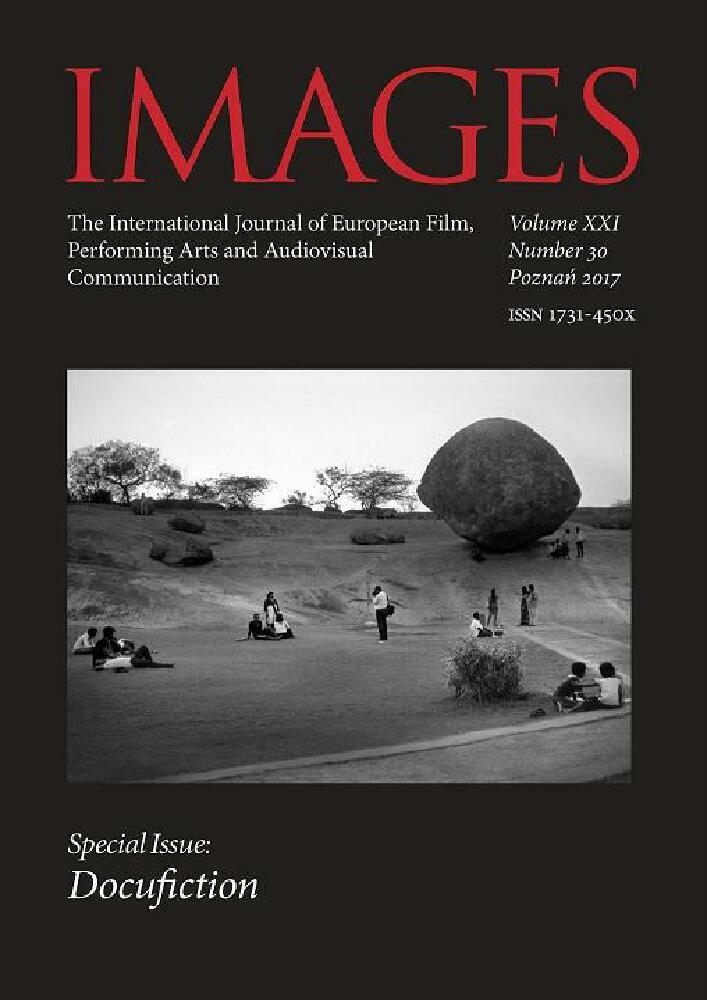Abstract
This article is devoted to the third part of Barbara Hammer’s documentary trilogy, History Lessons. The author analyzes and interprets the form and message of this post-queer essay, with the aim of describing its formula in relation to the mockumentary and found-footage film conventions. She goes back to the pioneer of found footage in the history of world cinema, Esfir Shub, and the position of women in production culture. She refers to Hammer’s debut film, Dyketactics (1974), to describe Hammer’s artistic and political tactic, consisting of intercepting images of women, rooted in visual history, and the subversive quotation of these images against the idea and context of the original. Dyketactics in History Lessons is about quoting archival materials from the genres of documentary, popular science and pornography with the aim of writing the history of the lives of lesbians in the US from the period before the Stonewall riots, where there is very little coverage of the story. The falsifying of archival materials through the editing manipulation of imagery and sound paradoxically uncovers not so much the truth about the lives of lesbians, as what seems to be hidden in images created with a completely different aim than telling the herstory of American women of various orientations and races.
References
Atwood L., Red Women on the Silver Screen. Soviet Women and Cinema From The Beginning to the End of Communist Era, Michigan 1993
Bravmann S., Queer Fictions of the Past: History, Culture and Difference, Cambridge 1997
Chiarini A., Feeling images. Montage, Body and Historical Memory in Barbara Hammer’s Nitrate Kisses, “Feminist Media Histories” 2016, vol. 2, no. 3
Cixous H., The Laugh of Medusa, trans. K. Cohen and P. Cohen, “Signs” 1976, vol. 1, no. 4
Corner J., Documentary Fakes, in: The Television Genre Book, London 2004
Faderman L., Odd Girls and Twilight Lovers: History of Lesbian Life in 20th-Century America, New York 2012
Giec M., Przekształcanie pamięci. Found footage jako machina kulturowej reinterpretacji, “Images” 2015, vol. 17, no. 26
Hammer B., Hammer! Making Movies out of Sex and Life, New York 2010
Hammer B., The Politics of Abstraction, in: Queer Looks: Perspectives on Lesbian and Gay Film and Video, eds. M. Gever, P. Parmar, J. Greyson, New York-London 1993
Handelman M., Barbara Hammer Teaches (and Titillates) with History Lessons, <http://www.indiewire.com/2001/10/interview-barbara-hammer-teaches-and-titillates-with-history-lessons-80703/>
Humm M., Słownik teorii feminizmu, przeł. B. Umińska i J. Mikos, Warszawa 1993
Humm M., The Dictionary of Feminist Theory, Ohio 1995
Radkiewicz M., Władczynie spojrzenia. Teoria filmu a praktyka reżyserek i artystek, Kraków 2010
Stollery M., Eisenstein, Shub and the Gender of the Author as Producer, “Film History” 2002, vol. 14, no. 1
Talarczyk-Gubała M., Conversation with Barbara Hammer in the Arts Museum in Łódź, Poland on Oct 17th, 2016 (non published)
License

This work is licensed under a Creative Commons Attribution-NonCommercial-NoDerivatives 4.0 International License.
